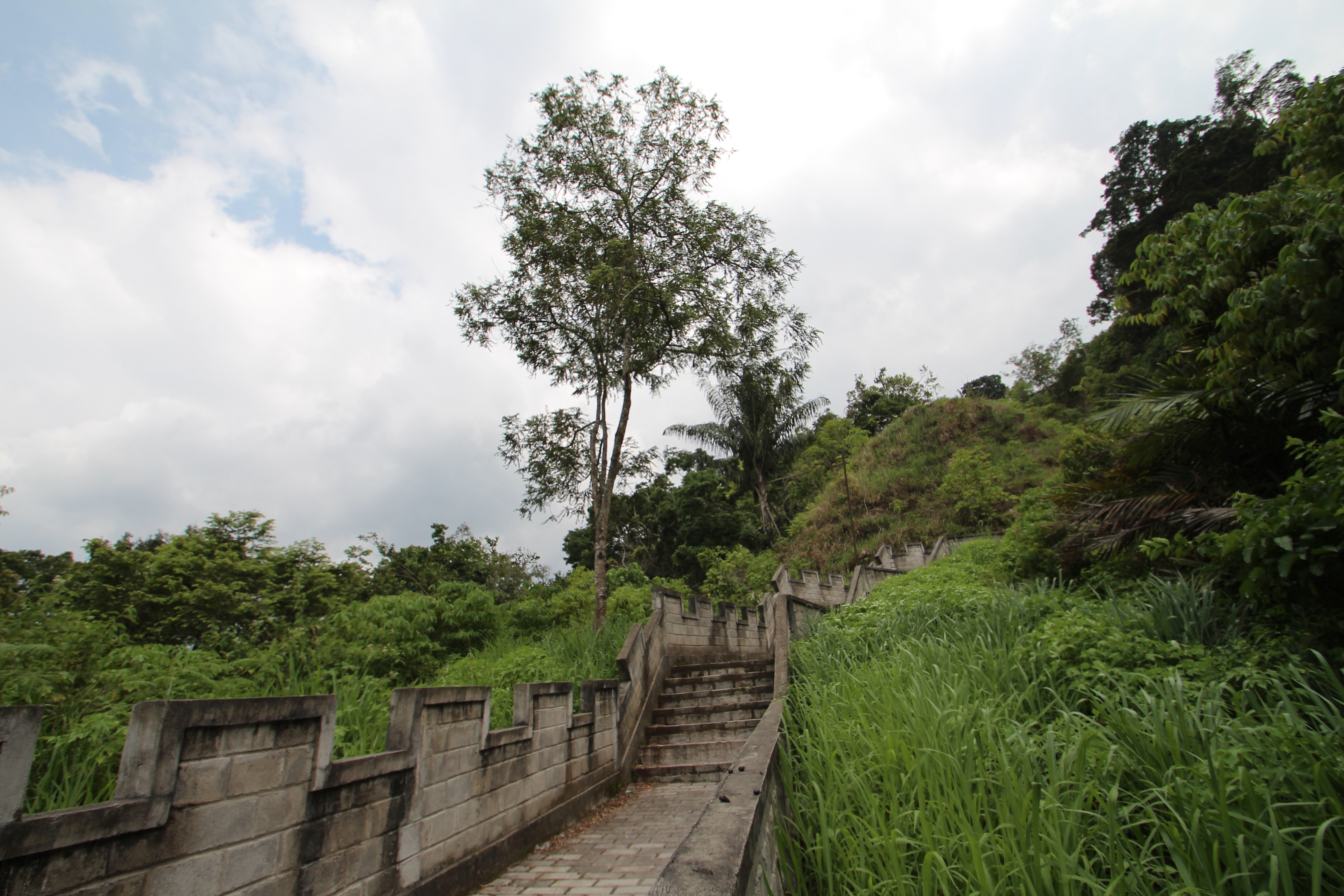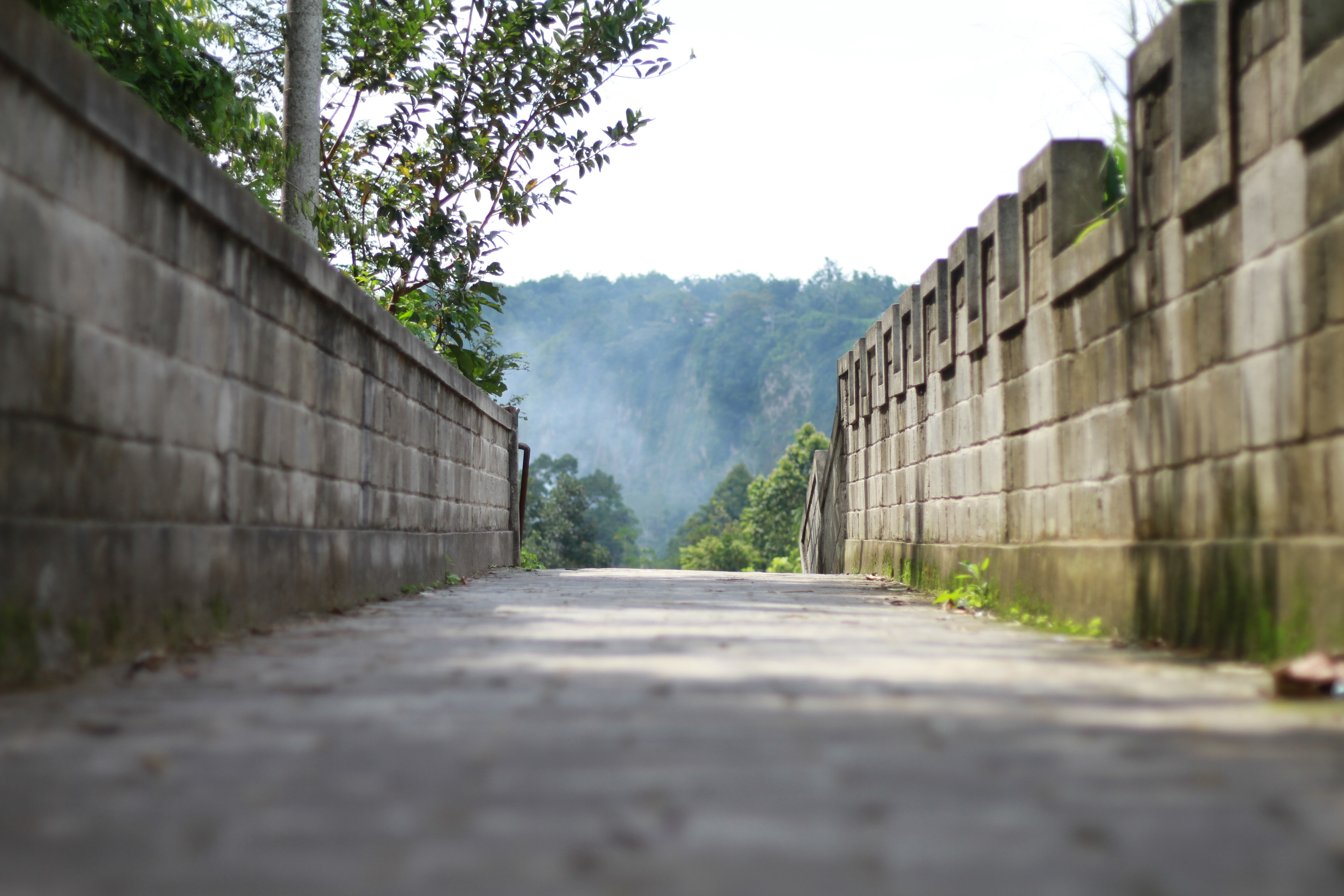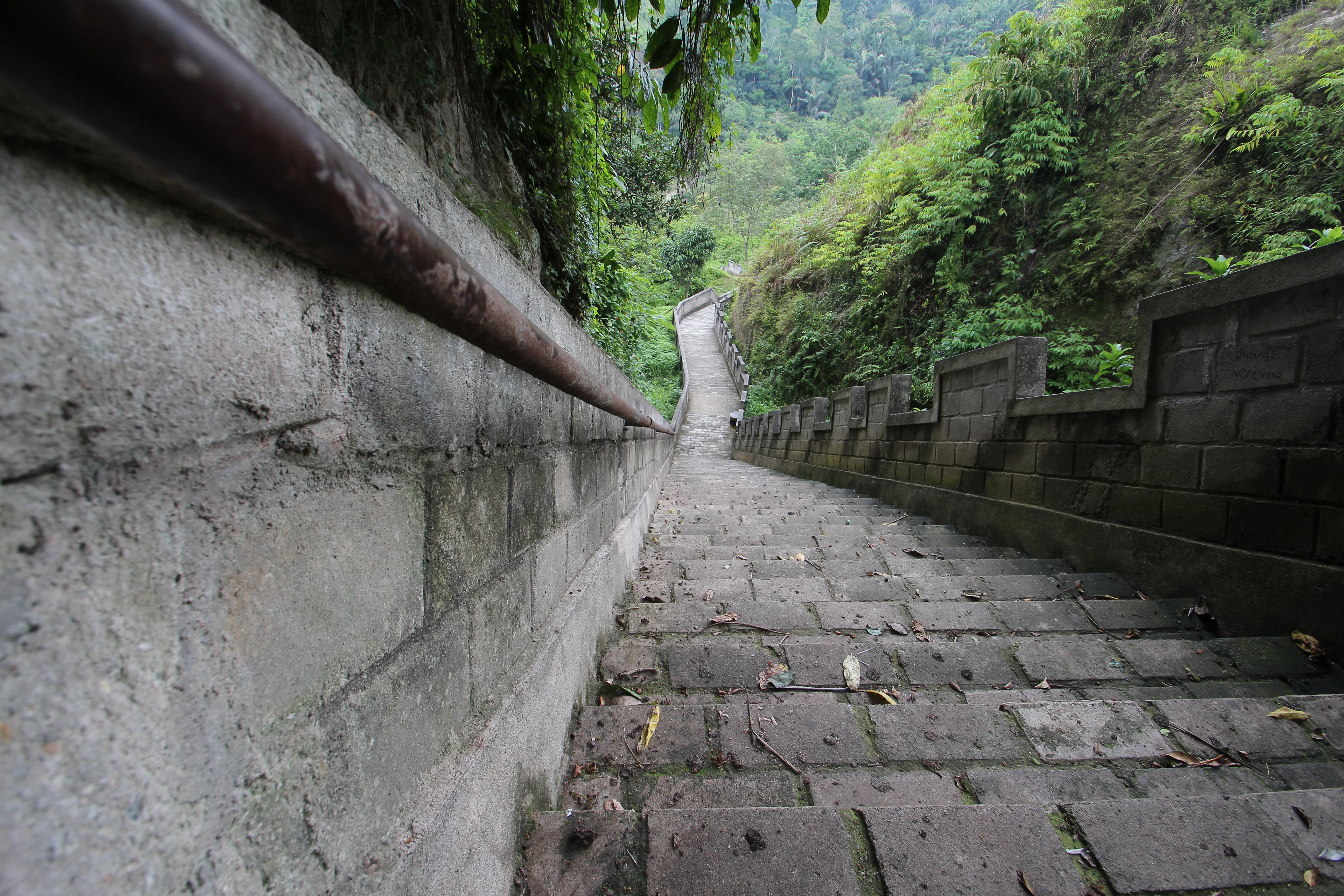It’s not anywhere near the length of the one in China, but Indonesia does have its own “Great Wall.” It is located between Agam and Bukittinggi in West Sumatra, and it is actually a 1.7km long bridge called Janjang Koto Gadang (The Great Wall of Koto Gadang).
The bridge connects Bukittinggi city with Koto Gadang through the Sianok Canyon and it provides spectacular views of tropical forests, steep ravines and other wonders of nature. The words Koto Gadang are taken from the name of a village in the Agam regency. Equally important, Koto Gadang is the birthplace of many famous Indonesians among them Emil Salim, Agus Salim, Rohana Kudus and Sutan Sjahrir. It is peppered with traditional Dutch wooden houses and is also home to silversmiths renowned for their jewellery.
The bridge is of similar construction to the Great Wall of China and it takes approximately 1,000 steps from the Lobang Jepang (the Japanese Tunnel), a tourist attraction in Bukittinggi, to the entry point of the wall. Along the wall, there are some rest areas, and the first of them is 500m from the gate on the right side. Together with the high cliffs, green valleys and beautiful rivers, visitors can also enjoy the cool, fresh air.
Legs and feet are tested with hundreds of steps at a gradient of more than 45 degrees but it is worth it when you witness the natural beauty at the end. Be warned, the climb can be demanding for older and less-fit people, and all visitors are expected to bring drinks and wear hats to combat the heat.
The tributary flows on a winding course through a hilly region underneath the bridge. Viewed from a height of 200 metres, it turns into an amazing landscape. Graceful would be a perfect word to describe it.
Historically speaking, the Great Wall of Koto Gadang is an extension of Janjang Saribu (the 1,000 steps) of Koto Gadang. Although not officially recorded in the history books of Minangkabau, the thousand steps were built by the community based on the gotong royong (mutual help) culture. The steps were an important means of access when they were built.
Later on, Koto Gadang residents built the path down Sianok Canyon connecting Bukittinggi and Koto Gadang. At the outset, this path was just for the sand collectors and miners along the river at the base of the canyon. The path became an alternative road for local communities to conduct trade and other activities over time.
The path was designed like a ladder and supported by a bamboo tree. The number of steps has never been calculated exactly, but people named it Janjang Saribu (one thousand steps) in recognition of its impressive length. The path really helped people travelling from Kota Gedang to Bukittinggi as it shortened the journey significantly. Unfortunately, the path became forgotten by people as time passed.
The reconstruction and renovation of the Great Wall of Koto Gadang was made possible by Communications and Information Technology Minister Tifatul Sembiring, who is a native of Bukittinggi. The project did not use state budget but was financed by donations from Tifatul Sembiring himself and a number of entrepreneurs in Jakarta who worked hard to raise funds.
When Tifatul met Mayor Ismet Amzis in Bukittinggi, he was invited to go across the Sianok canyon on a morning jog. Seeing the beauty of the Sianok canyon, Tifatul spontaneously offered the construction and renovation of Sianok canyon, to be modelled on the Great Wall of China.
The first phase of the project was carried out in the area of Janjang Saribu and started in July 2012. The Bukittinggi side of the construction began in the Bukit Apit area. In the second phase, the construction involved building the magnificent gate and other facilities. With this new face, the number of tourists coming to the city of Bukittinggi and Agam is expected to increase.
The lost thousand steps are now completely rebuilt in the style of the Great Wall of China. With the Great Wall of Koto Gadang coming into existence, domestic and foreign tourists will be exposed to retail outlets where they can purchase Koto Gadang’s traditional embroidery, silver jewellery and silver miniatures.
GETTING THERE
The wall is located 90km / three hours north of Padang city and is the pride of the Minang community. It has turned out to be a major tourist attraction for West Sumatra along with Jam Gadang (the clock tower), the Japanese tunnel, the Sianok canyon, Fort de Kock, the zoo, museums and the birthplace of Bung Hatta, one of the country’s founding fathers.
Daily flights from Jakarta to Padang are available with Garuda Indonesia, Citilink, Sriwijaya Air and Lion Air. Cars are available for rent from Padang at Rp500,000, which includes a driver and fuel for a day trip. These are available to order beforehand for airport pickups.
WHERE TO STAY
Novotel Bukittinggi
Jalan Laras Datuk Bandaro, Bukit Cangang
Kayu Ramang, Guguk Panjang, Bukittinggi.
+62 752 35000
Grand Rocky Hotel Bukittinggi
Jl. Yos Sudarso No.29, Kayu Kubu, Guguk Panjang, Kota Bukittinggi. +62 752 627000
Grand Royal Denai Hotel
Jalan Yos Sudarso, Kayu Kubu, Guguk Panjang, Kayu Kubu, Guguk Panjang, Kota Bukittinggi,. +62 752 8100535/8100536/8100539/8100540






